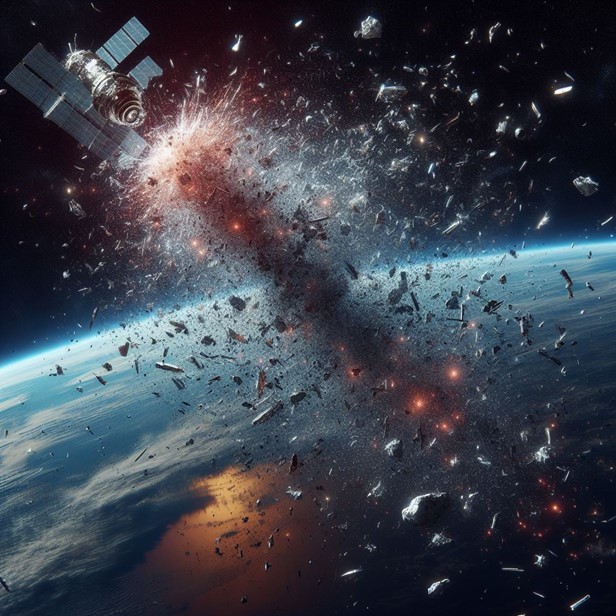Space break-up forensics: Unravelling the secrets of explosions and collisions in Space
Space debris is a growing problem that threatens the safety and sustainability of space activities. Break-up events can occur due to collisions with other satellites or debris, as well as due to internal explosions within a satellite (high pressure propellant tanks, electric batteries, etc.). Satellite break-ups create clouds of fragments, increasing collision risk for other spacecrafts and potentially causing a domino effect of cascading collisions that could make space unusable, known as Kessler Syndrome. To prevent this phenomenon, it is important to understand the dynamics and consequences of these events, and to develop methods to reconstruct and characterise them based on real data from historical break-up events.
GMV, together with the Politecnico di Milano (Italy) leading the project, the Istituto di Fisica Applicata “Nello Carrara”, Consiglio Nazionale delle Ricerche (abbreviated IFAC-CNR, Italy) and SpaceDyS (Italy) has been recently awarded with a new ESA’s activity named On-Orbit Break-up Forensics to provide innovative methodologies for the analysis and characterisation of space fragmentation events.
The activity will leverage the state-of-the-art debris modelling and observation capabilities to improve the estimates of the spatial and temporal distribution of debris fragments after a break-up in orbit. It will also focus on new metrics and methods to characterise the dynamics of a cloud of debris, and aim to optimise the tasking of sensors for dedicated observation campaigns. Rapidly observing fragments after a satellite break-up in orbit is critical as they rapidly disperse and become more challenging to accurately track. As a result, the activity will develop a new tool for reverse engineer a fragmentation starting from observed fragments.
This activity will contribute to the development of a digital twin of the space debris environment after a fragmentation, which will support forensics in space and the risk assessment for space missions in their design phases.
The activity is financed through ESA's Technology Development Element (TDE) and aligned to contribute to the technology objectives from ESA’s Space Safety Programme, focusing on the improvement of the technologies for effective risk evaluation, by establishing a theoretical formulation for the estimation the space debris density within days after a break-up event in orbit.





